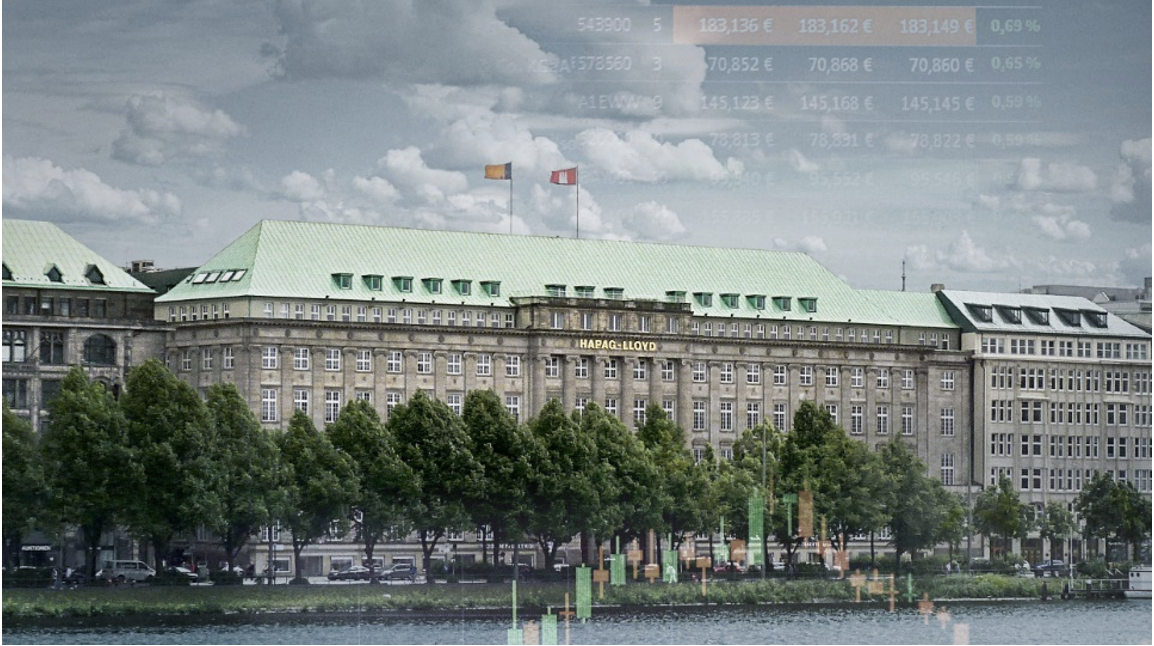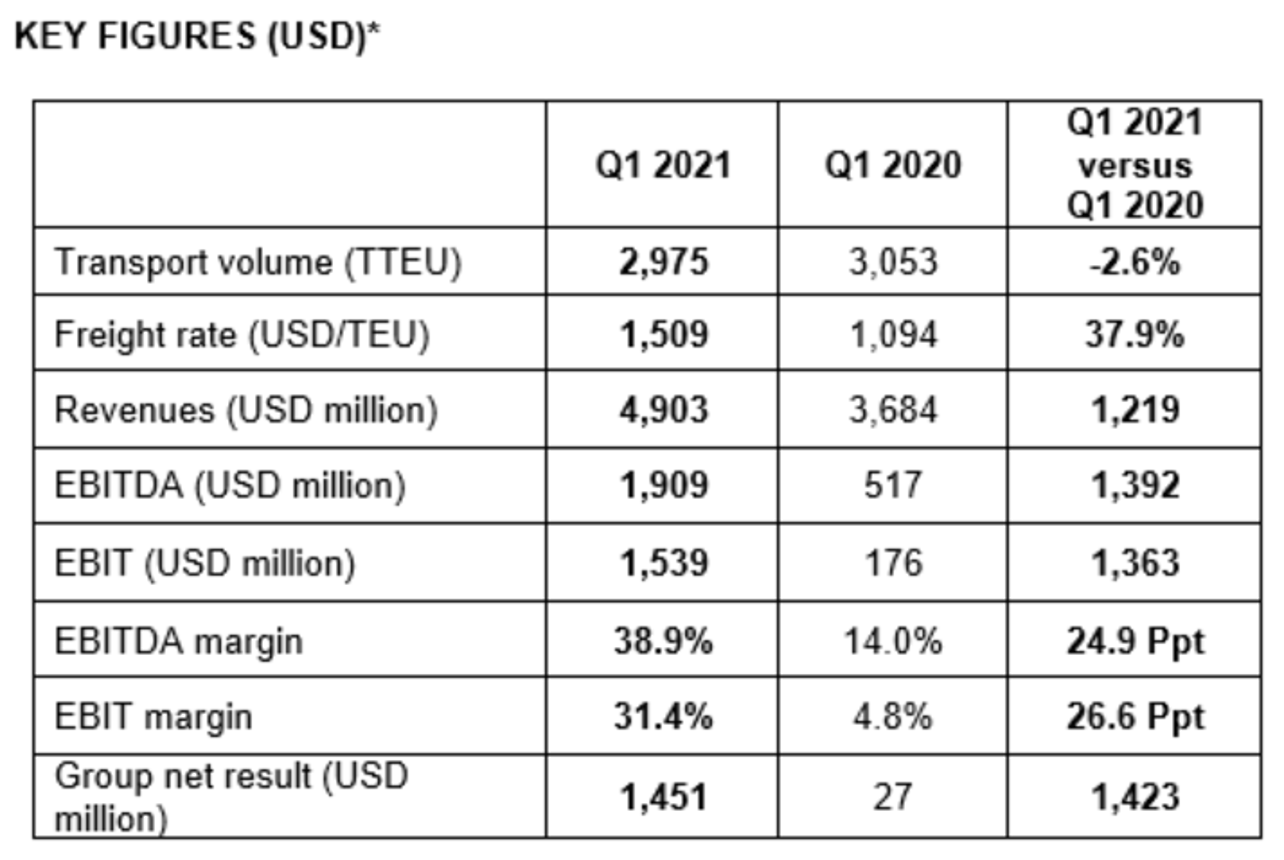Hapag-Lloyd with a strong start to the year in first quarter
- Significant increase in result compared to previous year
- Transport volume slightly below prior-year level
- Outlook for 2021 confirmed
Hapag-Lloyd has concluded the first quarter of 2021 with earnings before interest, taxes, depreciation and amortisation (EBITDA) of roughly USD 1.9 billion (approximately EUR 1.6 billion). Earnings before interest and taxes (EBIT) rose to roughly USD 1.5 billion (approximately EUR 1.3 billion). The Group net result improved to around USD 1.5 billion (EUR 1.2 billion).
“On the back of the high demand for container transports, we have benefited from better freight rates, especially in the spot market. On top of that, bunker prices have been lower than in 2020. As a result, we concluded the first quarter with a very positive financial result and look back overall on a solid start to the year,” said Rolf Habben Jansen, CEO of Hapag-Lloyd.
Revenues increased in the first quarter of 2021 by around 33 percent, to roughly USD 4.9 billion (approximately EUR 4.1 billion), particularly due to a higher average freight rate, which increased by approximately 38 percent to reach 1,509 USD/TEU (Q1 2020: 1,094 USD/TEU). Nevertheless, due to the demand-related congestion of port and hinterland infrastructures in many places as well as to a resulting shortage of freely available ships and containers, the transport volume was slightly below the level of the same quarter of the prior year, at roughly 3.0 million TEU (Q1 2020: approximately 3.1 million TEU), or minus 2.6 percent. On the other hand, a roughly 27 percent lower average bunker consumption price, which amounted to USD 384 per tonne in the first three months of the 2021 financial year (Q1 2020: USD 523 per tonne), had a positive impact on earnings.
Hapag-Lloyd expects that the EBITDA and EBIT for the current 2021 financial year as a whole will clearly surpass the prior-year level. While the positive earnings trend is likely to continue in the second quarter of 2021, a gradual normalisation is currently expected in the second half of the year. However, this forecast remains subject to considerable uncertainty due to a number of factors, including: the above-average volatility of freight rates at this time; operational challenges, such as infrastructural bottlenecks; and the inability to predict the future course or economic impacts of the COVID-19 pandemic.
Rolf Habben Jansen: “While we remain optimistic for 2021 as a whole, the ramifications of the COVID-19 pandemic and the congested supply chains continue to present a huge challenge to all market participants. We will do everything in our power to help normalise this difficult market environment as quickly as possible and make as much capacity available as possible. We will also double down on our efforts to provide the best possible service quality to our customers – as we know that we can and must still do better on that front – and we will continue to implement our Strategy 2023.”
The financial report for the first quarter of 2021 is available online at:
https://www.hapag-lloyd.com/en/ir/publications/financial-report.html




About Hapag-Lloyd
With a fleet of 241 modern container ships and a total transport capacity of 1.7 million TEU, Hapag-Lloyd is one of the world’s leading liner shipping companies. The Company has around 13,300 employees and 395 offices in 131 countries. Hapag-Lloyd has a container capacity of approximately 2.8 million TEU – including one of the largest and most modern fleets of reefer containers. A total of 121 liner services worldwide ensure fast and reliable connections between more than 600 ports on all the continents. Hapag-Lloyd is one of the leading operators in the Transatlantic, Middle East, Latin America and Intra-America trades.
Disclaimer
This press release contains forward-looking statements that involve a number of risks and uncertainties. Such statements are based on a number of assumptions, estimates, projections or plans that are inherently subject to significant risks, uncertainties and contingencies. Actual results can differ materially from those anticipated in the Company’s forward-looking statements.

